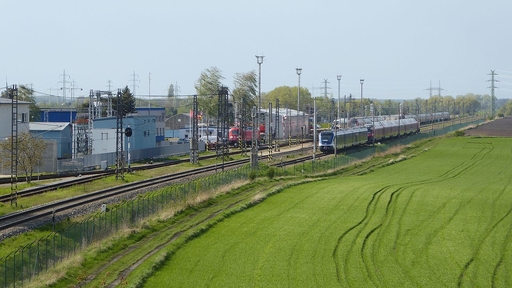
One of the largest and most used railway testing facilities in Europe. Apart from testing vehicles themselves, it is also used for testing railway technologies. The Czech railway speed record has been twice broken on it.

The most widely used Czech electric unit that serves primarily the suburban railway lines around Prague and Ostrava. At the time of its introduction, it brought a number of revolutionary solutions, such air conditioning and a user-friendly information system.
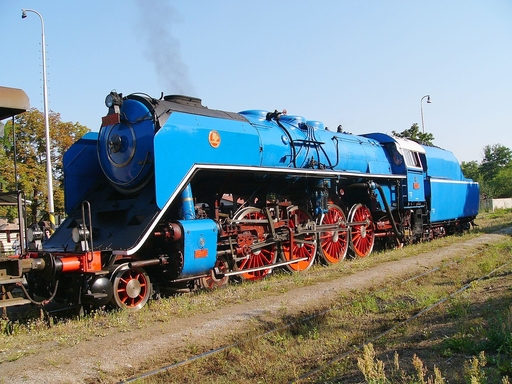
Post-war steam locomotive produced by Škoda, famous for its attractive blue and red paintwork, which earned it the nickname Albatros.
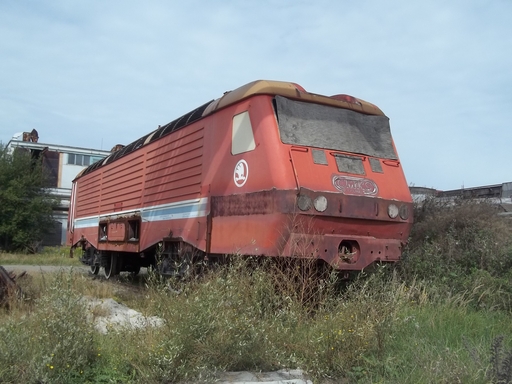
Electric locomotive that was planned as the first third-generation electric locomotive by Škoda. It never entered mass production; only one unit was produced in 1987. The unit was shedded in 1997 and later taken out of service.
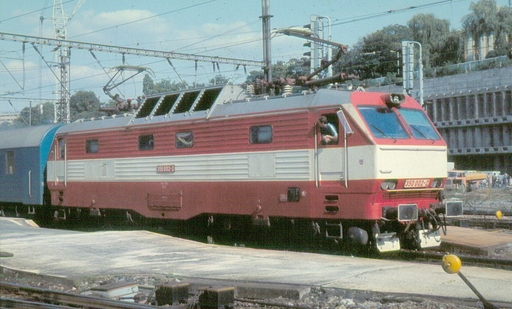
The first multi-system electric locomotive by Škoda and the first representative of the 2nd generation of Škoda electric locomotives. Owing to its modern design of unified structural elements, it became the basis for another important class of locomotives: class 150, i.e. 151.

The first mass-produced 3rd-generation electric Škoda locomotive. It is currently the most powerful and fastest Czech locomotive, which can be used in all neighbouring countries. Moreover, derived versions have been developed for German and Slovak railway companies.

Electric unit produced in two prototypes in 1990 and 1991. Although it never entered mass production, the two produced units transported passengers on railways near Prague and briefly also in Ostrava until 2003 and 2009 respectively. The became predecessors to the more modern, successful and better known class 471.
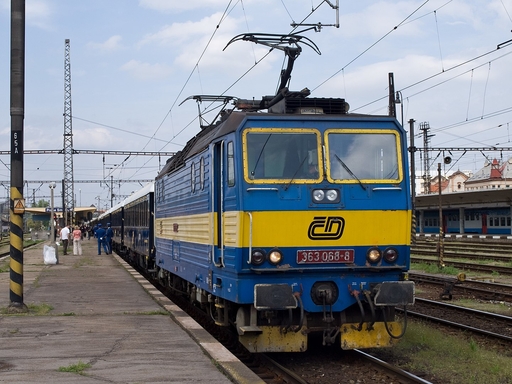
Second generation electric multisystem Škoda locomotive, delivered from 1980 to 1990. It became the world’s first multisystem locomotive with pulse regulation and laid the foundations for other locomotives widely Czech locomotives – classes 163, 162 and 263.
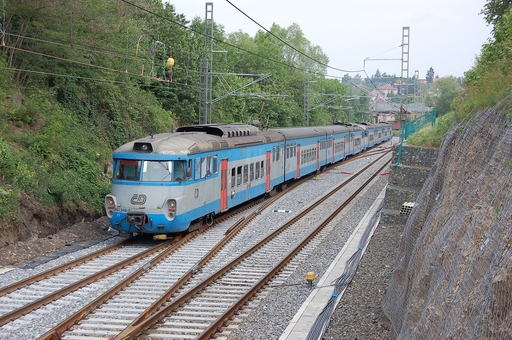
The most widespread Czechoslovak train units used in the second half of the 20th century. Their history goes back to the middle 1950s and although their planned service life was 15 years, because of their advanced engineering solution and reliability they were in operation until 2018.
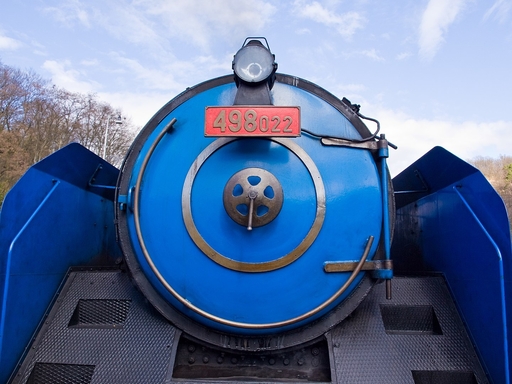
The original Czechoslovak identification marking system for railway vehicles developed by the engineer Vojtěch Kryšpín in the early 1920s. The system was valid from 1 January 1925 until 31 December 1987, when it was replaced by the Czechoslovak Railways with a new, basically still valid identification marking system.
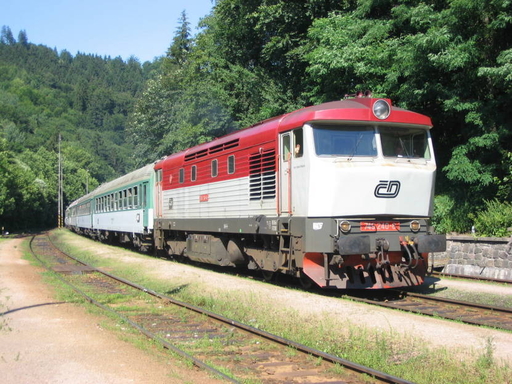
Diesel electric locomotive first built in 1964, intended for passenger, express and light cargo trains. Owing to its universal purpose, it is in service on both national and regional lines.

Identification marking of Czech locomotives valid since 1 January 1988. It was preceded by the so-called Kryšpín's locomotive identification marking. In 2006 it was complemented with another, European identification marking.
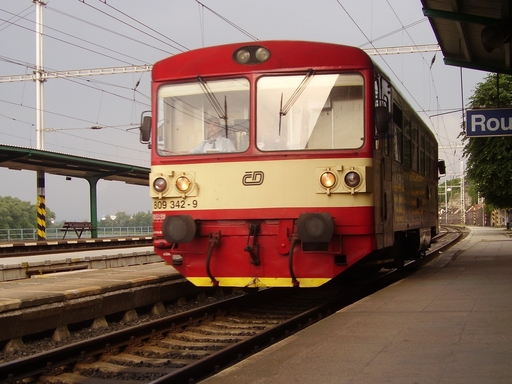
The most widespread class of traction vehicles on Czech railways. Between 1973 and 1982, 860 units were delivered. As its initial faults were often resolved in the way that the orchestrion was played in the popular television series Cottagers (Chalupáři), it is best known under the nickname “orchestrion”.

A type of motor coaches that were intended to become the backbone of light, passenger transportation, however they were never mass produced. The only two prototypes were in service between 1974 and 1998. The absence of mass production was compensated by a mass adoption of trains of class 810, including on lines they were not built for, either by capacity or performance.

Motor unit for light, passenger transportation on regional railway lines, developed from class 810 motor coaches and class 010 passenger coaches. The modernisation took place between 2005 and 2012 and significantly improved the quality of travel on Czech railways.
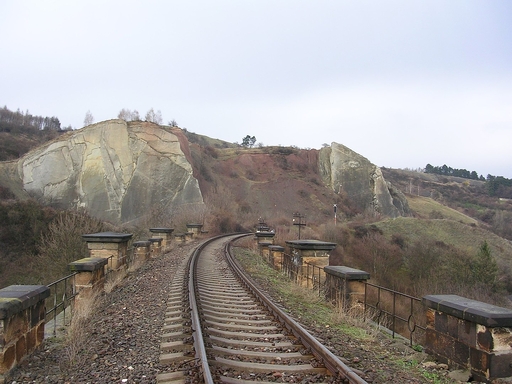
Railway track built in 1868–1872 between the Smíchov and Jinonice railway stations in Prague. It was nicknamed after the Austrian mountain railway because of the difficult terrain and beautiful scenery.
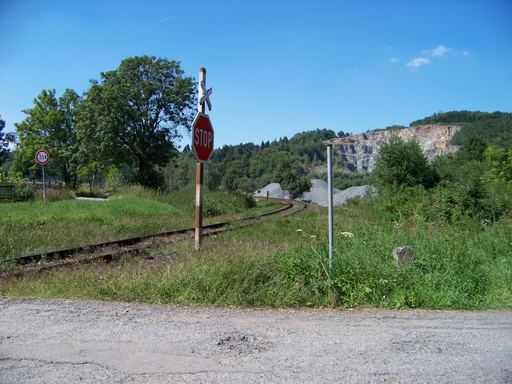
Railway track running near the river Sázava, named by Czech hikers, whom the wild natural beauty of the local countryside reminded of the North American transcontinental track, the so-called Pacific. Sázava Pacific reached the peak of its glory in the interwar period, i.e. in the First Czechoslovak Republic.
2016-2020 ABCzech.cz - © Filozofická fakulta Univerzity Karlovy
Content from this website may be used without permission only for personal and non-commercial purposes and with the source cited. Any other use is allowed only with the authors' consent.
This web application Sonic.cgi meets GDPR requirements. Current information can be found here.